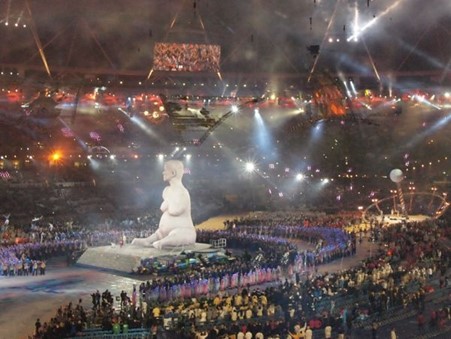In September 2005, a 3.5m high, 13 tonne statue was unveiled atop the fourth plinth in Trafalgar Square, London. The statue is a beautiful, strong, proud, naked, pregnant woman. She has no arms, and her legs are shortened. She is smooth and white, carved from marble.
The woman is Alison Lapper, an artist who spent her childhood in an institution for disabled children after her mother was advised from medics that she should forget about her daughter. When pregnant herself Alison received admonitions from family, strangers and professionals about having a child due to her perceived disabilities. Despite this, she pursued independence and carved out a career in art as well as becoming a mother.
The artwork is fascinating to study as it challenges many expectations and assumptions in our society and within health and social care.
The statue is in a style inspired by ancient Greek marbles, where figures posed naked in strong, heroic stances, showing off their physical prowess. This was art that created idealised visions of beauty. Over time, these ancient statues have sometimes lost limbs, creating body images that have come to be accepted and normalised within this artistic context. At first glance, the statue of Alison Lapper can be viewed with the same lens, her arms appear to be ‘missing’. Because of the white marble and the familiar style, at first look perhaps this isn’t questioned. However, Alison Lapper isn’t missing anything – she is her whole self, this is her. Quinn commented: “It was interesting to me to see what is acceptable in art, but unacceptable in life”. This should make us question preconceptions about how we view disabled bodies – what is normal, complete and whole for one person, isn’t universal.
The statue is on a plinth. For many disabled people in the public eye, especially wheelchair users, they are in a physically lower position than mobile people, meaning that they are literally looked down upon. The sculpture places Alison Lapper in an elevated position, where we look upwards at her, and she is bigger than us. This is a powerful reversal of situations.
The statue is unashamedly naked. Proudly disabled and naked. This isn’t a representation of disabled bodies that is often shown in public, let alone shouted about from the top of a plinth. The viewer can form their own judgements, question their own subconscious assumptions and respond to their own internal prejudices. The nakedness and the swollen belly remind us of her sexuality, her fertility, and her role as a mother and caregiver. In her own work, Lapper has photographed herself naked, challenging perceptions of beauty and disability. For healthcare workers, medics, social workers, and general society, this is an important reminder – that being born with a different body doesn’t stop people from having natural human urges, needs and dreams, and shouldn’t stop them from achieving these. Individuals with disabilities shouldn’t be assumed to be always in the role of cared-for; they may be caregivers themselves. Identities are unique and complex.
Studying artworks such as this can benefit health and social care professionals through creating conversations around assumptions of disability, opening up their own potential biases around disability, and considering the portrayal of disabled bodies in the public eye, and the relationship that this has with identity.
Lorna Sankey has a Foundation degree in Fine Art, a BSc in Art History & Literature, and an MSc in Occupational Therapy. She has worked clinically in a variety of health and social care settings, and is currently working as a Research Associate at the University of East Anglia on studies regarding retention of pre and post registration nurses. Lorna has an interest in the role of art, art history and literature within healthcare education, particularly regarding the deeper understanding that the humanities can bring to health studies, and the role that the humanities play in shaping societies assumptions and perspectives of disability and identity.
References:
http://marcquinn.com/artworks/the-complete-marbles
Millett-Gallant, A. (2010) The Disabled Body in Contemporary Art. Palgrave Macmillan.
Saner, E. (2014) Interview, Alison Lapper: ‘Disabled people are looked at as a drain on society, and I’m certainly not that’. The Guardian.

